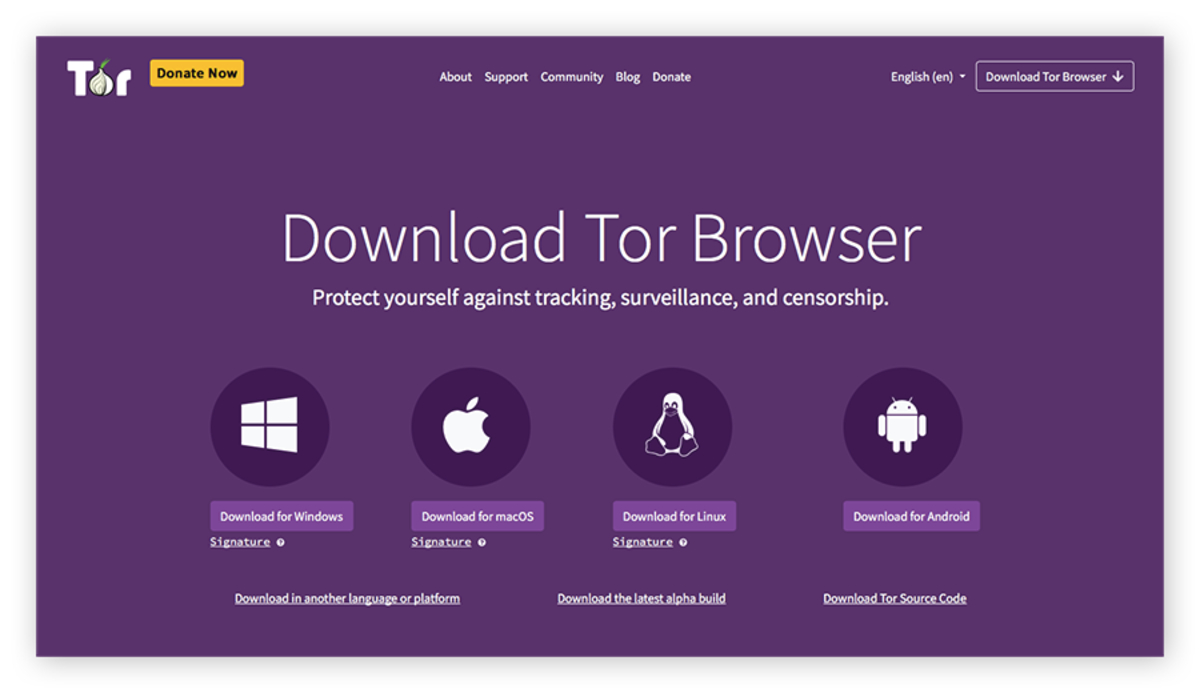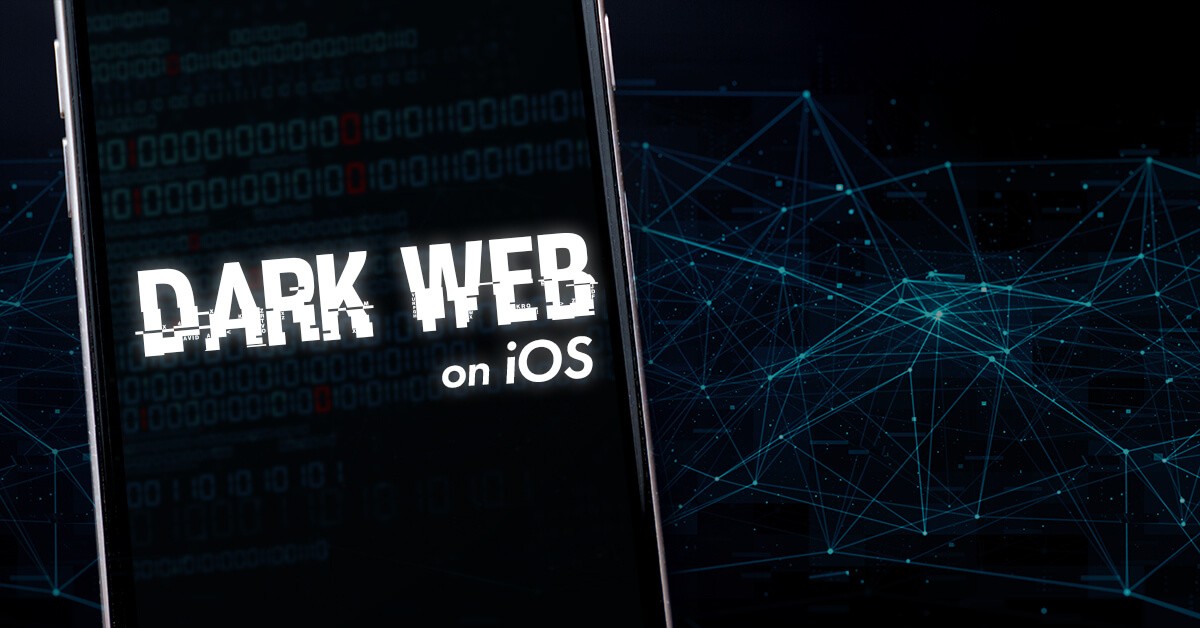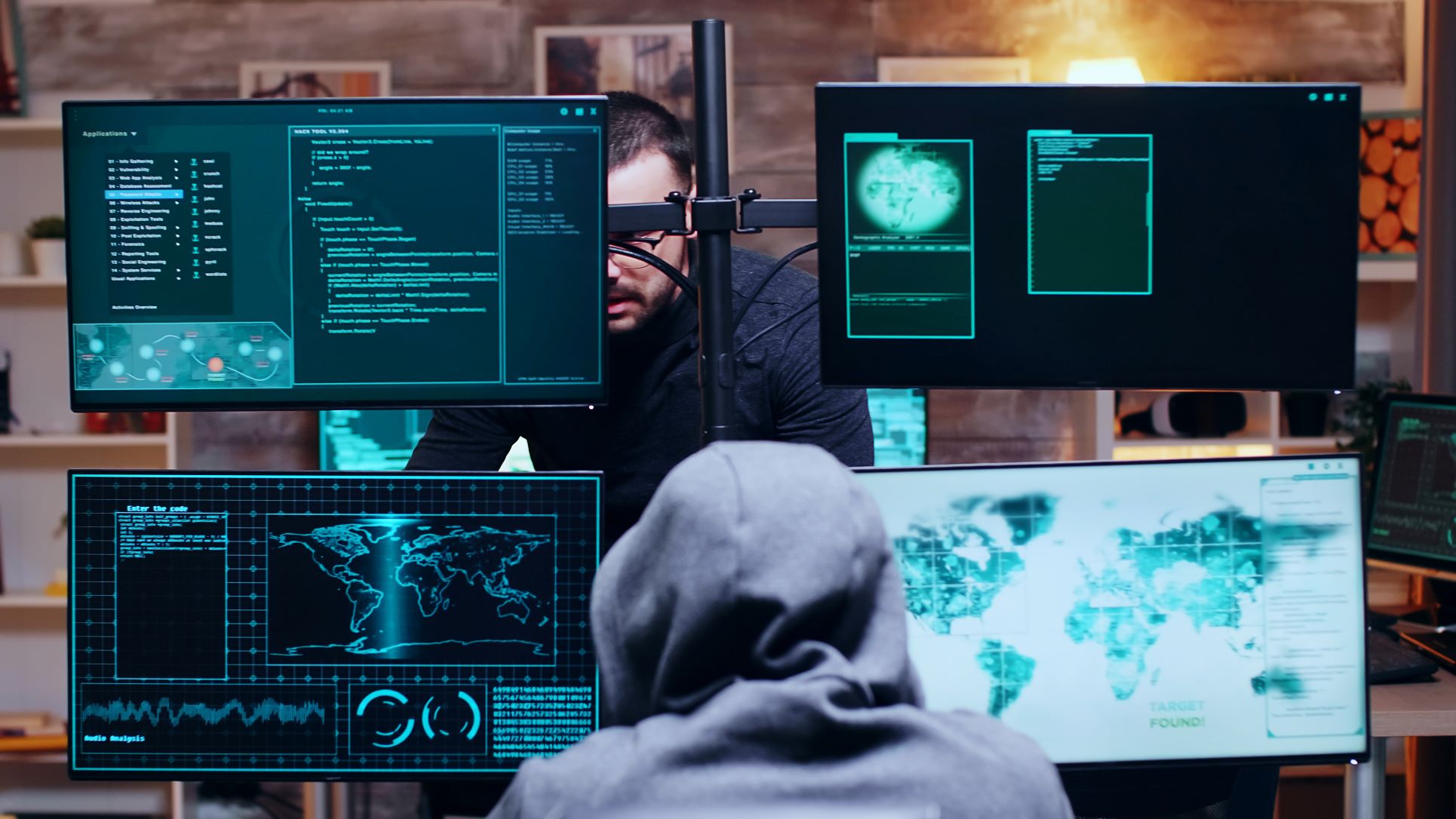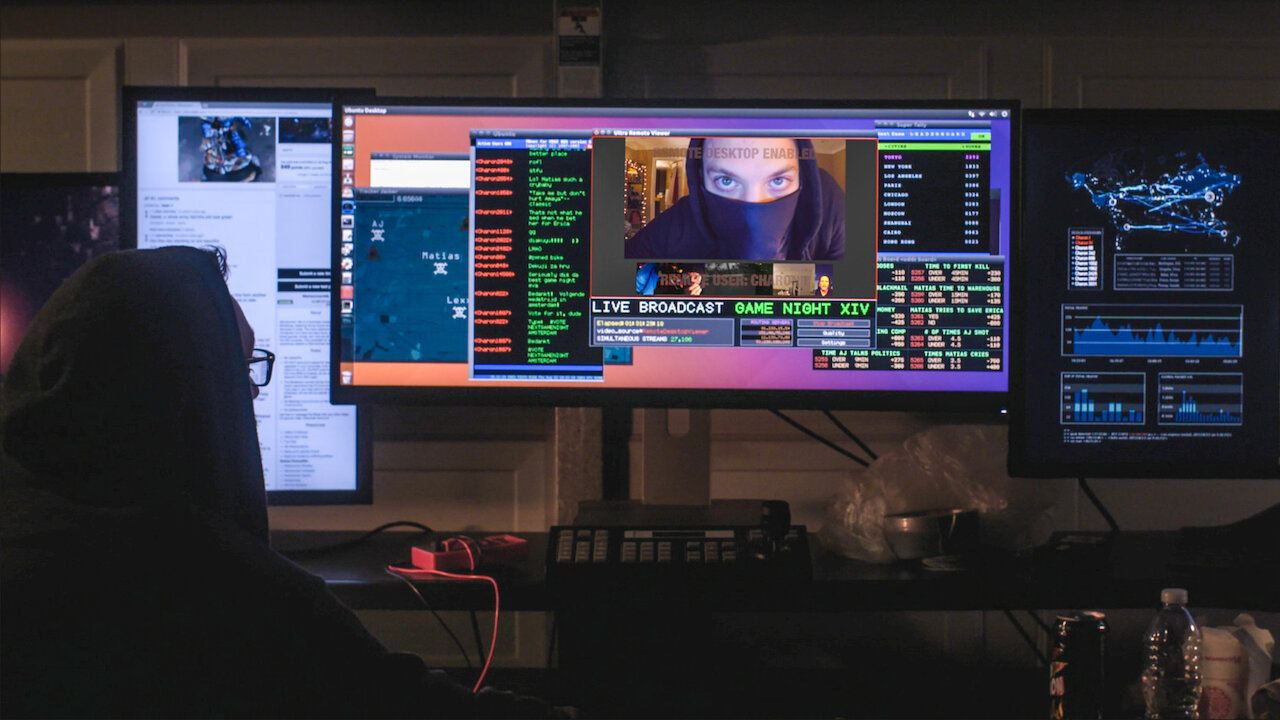Introduction
The Dark Web, an enigmatic and mysterious realm of the internet that has captivated the curiosity of many. It is often portrayed as a hidden underworld where illegal activities take place, shrouded in secrecy and anonymity. But what exactly is the Dark Web, and how does it work? In this article, we will delve into the depths of the Dark Web to uncover its inner workings and shed light on its hidden world.
The Dark Web is a part of the internet that is not indexed by search engines and requires specific software, such as Tor, to access. It is often misconstrued as synonymous with illegal activities, but it also serves as a sanctuary for whistleblowers, activists, and individuals seeking to protect their privacy and anonymity. It is a parallel internet, existing alongside the surface web that we commonly use for everyday browsing.
Unlike the surface web, which is accessible to anyone with an internet connection, the Dark Web provides a cloak of anonymity for its users. Internet traffic on the Dark Web is encrypted and routed through multiple relays, making it extremely difficult to trace a user’s identity or location. This anonymity has attracted a diverse range of individuals and groups – from criminals and hackers to journalists and whistleblowers.
Accessing the Dark Web requires a level of technical knowledge and caution. Simply typing in a URL won’t lead you to the Dark Web; instead, you need to navigate through hidden websites and marketplaces using specific addresses. These addresses often end with the “.onion” extension, indicating that they belong to the Tor network.
The Dark Web operates on the principle of decentralized hosting, with websites hosted on servers spread across the globe. This distributed nature makes it challenging for law enforcement agencies to shut down these sites, as there is no central authority or server to target. Additionally, users’ identities are protected through the use of cryptocurrencies, such as Bitcoin, which provide a level of financial anonymity.
While the Dark Web has gained notoriety for facilitating illegal activities, it is important to recognize that not everything on the Dark Web is illicit. Whistleblowers and journalists may use it as a means to share sensitive information, bypassing censorship and surveillance. It can also serve as a platform for individuals in repressive regimes to communicate freely and access information that is otherwise blocked.
In the next sections, we will explore the inner workings of the Dark Web, the role of cryptocurrencies, the types of activities that take place, and how to stay safe while navigating this shadowy realm. By understanding the Dark Web, we can better comprehend its impact on privacy, security, and the future of the internet. So, buckle up and prepare to embark on a journey into the depths of the Dark Web.
What is the Dark Web?
The Dark Web is a subset of the internet that is hidden from traditional search engines and requires specific software to access. It is often described as a clandestine network of websites and forums that operate beyond the reach of law enforcement and government agencies. However, it’s important to differentiate between the Dark Web, the Deep Web, and the Surface Web.
The Surface Web is the portion of the internet that is accessible through search engines like Google and Bing. It includes websites, social media platforms, online stores, and other publicly available information. The Deep Web refers to the vast amount of content that is not indexed by search engines and includes private databases, academic journals, and password-protected areas.
The Dark Web, on the other hand, is a small part of the Deep Web that is intentionally hidden and requires specialized software, such as Tor (The Onion Router), to access. Websites on the Dark Web use encryption and anonymous communication protocols to ensure that both the website’s operators and its visitors remain unidentified.
The Dark Web is often associated with illegal activities, such as drug trafficking, weapons sales, and hacking services. While these activities do exist on the Dark Web, it is also home to a myriad of other content, including forums for discussions on various topics, whistleblower platforms, and even legitimate businesses looking to maintain user privacy. It is crucial to note that not everything on the Dark Web is illicit, and it provides a haven for individuals seeking anonymity and privacy in an era of increasing digital surveillance.
The anonymity of the Dark Web has made it attractive to a wide range of users. Journalists and whistleblowers, for example, may use the Dark Web to communicate securely and share sensitive information without fear of retribution. Activists in repressive regimes can use it to access blocked websites and freely express their views. Additionally, users concerned about their online privacy may use the Dark Web to browse the internet without leaving behind a digital footprint.
While the Dark Web does offer a level of anonymity, it is essential to acknowledge the risks associated with navigating this hidden network. The lack of regulation and identification mechanisms means that scams, malware, and illegal activities are prevalent. Users must exercise caution and employ security measures to avoid falling victim to these risks.
In the following sections, we will explore how the Dark Web operates, how to access it, the role of cryptocurrencies, the types of activities that occur, and steps to stay safe while venturing into this clandestine realm. By understanding the Dark Web, one can navigate it more responsibly and make informed decisions about accessing this hidden part of the internet.
How Does the Dark Web Work?
The Dark Web operates on a different infrastructure and principles compared to the traditional internet we are familiar with. While the surface web uses standard search engines and can be accessed by anyone, the Dark Web requires specialized software, such as Tor, to maintain anonymity and privacy.
The Tor network, also known as The Onion Router, is a crucial component of the Dark Web. It is a free and open-source software that enables users to access websites and services anonymously. Tor works by routing internet traffic through a series of volunteer-operated servers known as “nodes” or “relays.” Each relay in the chain only knows the IP address of the previous and next relay, making it extremely difficult to trace back a user’s location or identity.
When a user accesses a website on the Dark Web, their request is encrypted and passed through several relays before reaching the destination. This process of layered encryption is what gives Tor its “onion” analogy. Each relay decrypts a layer of encryption, revealing the next relay in the chain, until the final request reaches the intended website. This multi-layered encryption ensures that the origin of the request remains concealed.
Websites on the Dark Web typically have addresses that end with the “.onion” extension, indicating that they are part of the Tor network. These websites are not indexed by search engines, making it challenging to discover them unless you already know their specific addresses. Instead, users rely on directories and forums that list trusted links to various websites on the Dark Web.
The content on the Dark Web varies greatly, ranging from ordinary forums, marketplaces, and chat rooms to more illicit activities such as drug trades, hacking services, and illegal pornography. It is crucial to understand that the Dark Web is not inherently evil or criminal; it is a platform that offers anonymity and privacy, which attracts both legitimate users and those engaged in illegal activities.
To participate safely in the Dark Web, users must practice good security hygiene. This includes employing strong passwords, using reputable VPN services, regularly updating software, and avoiding downloading files from untrusted sources. Additionally, it is important to conduct thorough research and exercise caution when engaging with websites or individuals on the Dark Web.
It is worth noting that law enforcement agencies actively monitor the Dark Web and work to take down illegal websites and apprehend individuals involved in criminal activities. While the level of anonymity provided by Tor makes it challenging for authorities to identify users, it is not foolproof. Those engaging in illegal activities on the Dark Web still face the risk of being exposed and apprehended.
In the next sections, we will explore how one can access the Dark Web, the role of cryptocurrencies in facilitating transactions, the types of activities that occur, and tips on staying safe while navigating this hidden realm. Understanding the inner workings of the Dark Web is crucial for users to make informed decisions and protect their online security and privacy.
Accessing the Dark Web
Accessing the Dark Web is not as simple as typing a URL into a regular web browser. It requires specific software and additional precautions to ensure anonymity and privacy. The most popular tool for accessing the Dark Web is Tor (The Onion Router), which allows users to navigate the hidden websites.
To get started, one must download and install the Tor browser from the official website. The Tor browser is a modified version of Firefox that is configured to connect to the Tor network. It routes internet traffic through multiple relays, encrypting the connection and ensuring anonymity.
Once the Tor browser is installed, opening it is similar to launching any other web browser. However, it is crucial to note that simply using the Tor browser does not guarantee complete anonymity. Additional steps must be taken to maximize privacy and security.
Before accessing the Dark Web, it is recommended to disable any browser plugins or extensions that could potentially expose your real IP address or compromise the security of your connection. This includes browser add-ons such as Flash, JavaScript, and active content, as they can be used to track your activities or exploit vulnerabilities.
After taking these precautions, the Tor browser can be used to browse the Dark Web. Websites on the Dark Web are generally not indexed by search engines and can only be accessed using their specific addresses, often with the “.onion” extension. Finding these addresses can be challenging, as there is no centralized directory or search engine for the Dark Web.
To discover Dark Web websites, users rely on directories and forums that list verified links. These directories and forums are maintained by individuals who curate and update the links to prevent phishing scams or malicious websites. It is essential to exercise caution when using these directories, as not all links may be trustworthy or secure.
Once a Dark Web address is obtained, it can be entered directly into the Tor browser’s address bar. The Tor browser will then connect to the Tor network and route the connection through multiple relays, ensuring anonymity throughout the browsing session. It is important to note that browsing the Dark Web can be significantly slower than the surface web due to the additional layers of encryption and the decentralized nature of the network.
While accessing the Dark Web may seem intriguing, it is crucial to approach it with caution and an understanding of the risks involved. The Dark Web is notorious for hosting illegal activities, scams, and malicious websites. Users must be vigilant and avoid engaging in any illegal activities or sharing personal information that could compromise their privacy and security.
In the upcoming sections, we will explore the role of cryptocurrencies in facilitating transactions on the Dark Web, the various types of activities that take place, and tips on staying safe while navigating this hidden realm. By understanding the intricacies of accessing the Dark Web, users can make informed decisions and protect themselves from potential threats.
The Role of Cryptocurrencies on the Dark Web
Cryptocurrencies play a significant role in facilitating transactions on the Dark Web. Due to the anonymous nature of cryptocurrencies, they have become the preferred method of payment for illegal goods and services. Bitcoin, in particular, has emerged as the most widely accepted cryptocurrency on the Dark Web.
One of the main advantages of using cryptocurrencies on the Dark Web is the enhanced level of anonymity they provide. Traditional financial transactions can be easily traced and linked back to individuals, making it risky for both buyers and sellers involved in illicit activities. Cryptocurrencies, on the other hand, operate on a decentralized and pseudonymous network, allowing users to conduct transactions without revealing their true identities.
When making purchases on the Dark Web, users typically transfer their desired cryptocurrency (usually Bitcoin) to the seller’s cryptocurrency address. These transactions are recorded on the blockchain, a public ledger that tracks all cryptocurrency transactions. While the transactions themselves are visible, the identities behind the addresses remain concealed, adding an additional layer of privacy.
This reliance on cryptocurrencies has also given rise to specialized marketplaces on the Dark Web, similar to e-commerce platforms found on the surface web. These marketplaces serve as hubs for buyers and sellers to conduct transactions, offering a wide range of illegal goods and services. From drugs and counterfeit documents to hacking tools and stolen data, these marketplaces cater to a demand for illicit goods on the Dark Web.
However, it is important to note that not all transactions on the Dark Web involve illegal activities. Cryptocurrencies provide an alternative means of conducting commerce for individuals seeking privacy and anonymity. Whistleblowers, activists, and individuals living under oppressive regimes often rely on cryptocurrencies to support their causes or access goods and services that may not be available otherwise.
While cryptocurrencies provide a level of anonymity for Dark Web transactions, it is not foolproof. Law enforcement agencies have made significant strides in tracing and identifying individuals involved in illegal activities on the Dark Web. Additionally, scams and fraudulent schemes targeting users on the Dark Web are prevalent. The decentralized nature of cryptocurrencies means that there is no central authority to reverse fraudulent transactions or recover stolen funds.
To navigate the Dark Web safely, users must exercise caution when conducting transactions and interacting with sellers. Avoiding suspicious websites and conducting thorough research is crucial to minimize the risk of falling victim to scams or illegitimate sellers.
In the next sections, we will explore the types of activities that occur on the Dark Web, along with tips on staying safe while navigating this hidden realm. By understanding the role of cryptocurrencies and the associated risks, users can make informed decisions and protect their online security and privacy while on the Dark Web.
Types of Activities on the Dark Web
The Dark Web is notorious for hosting a wide range of activities, both legal and illegal. While it has gained notoriety for facilitating illicit transactions and criminal activities, it is important to recognize that not everything on the Dark Web is inherently malicious. Here, we will explore some of the main categories of activities that take place on the Dark Web.
1. Illegal Marketplaces: These marketplaces are the most well-known aspect of the Dark Web. They operate similarly to e-commerce platforms on the surface web but focus on the sale of illegal goods and services. These goods can include drugs, firearms, counterfeit documents, hacking tools, stolen data, and more. These marketplaces often use cryptocurrencies as the primary method of payment to maintain anonymity during transactions.
2. Whistleblower Platforms: The Dark Web also serves as a platform for individuals who want to expose wrongdoing or share sensitive information anonymously. Whistleblower platforms provide a safe space for whistleblowers to leak classified documents, expose corporate or government misconduct, and communicate securely with journalists or concerned organizations.
3. Forums and Discussion Boards: Similar to their counterparts on the surface web, Dark Web forums and discussion boards cover a wide range of topics. These platforms can be used to discuss technology, security, politics, hacking, and other niche interests. While legitimate discussions occur on these forums, they can also provide a breeding ground for cybercriminals and extremists to share knowledge, trade techniques, and organize illegal activities.
4. Censorship Circumvention: In countries with strict internet censorship, the Dark Web provides an avenue for individuals to access blocked websites and communicate freely without fear of surveillance or retribution. By utilizing the anonymity provided by the Dark Web, users can bypass government restrictions and access information that is otherwise censored.
5. Privacy Tools and Services: The Dark Web is home to various tools and services that aim to enhance privacy and security. These include encrypted messaging platforms, anonymous email services, VPN providers, and privacy-focused operating systems. While some of these services are legitimate and useful for protecting privacy, others may be designed to exploit users or carry out malicious activities.
It is essential to note that engaging in illegal activities on the Dark Web can lead to severe consequences. Law enforcement agencies actively monitor the Dark Web and work to identify and apprehend individuals involved in illicit activities. Users should always exercise caution and understand the risks associated with accessing the Dark Web.
In the following sections, we will delve into tips and strategies for staying safe while navigating the Dark Web, as well as the future of this enigmatic realm. By understanding the different types of activities on the Dark Web, users can approach this hidden network with caution and make informed decisions while maintaining their online security and privacy.
Should You Visit the Dark Web?
Deciding whether or not to visit the Dark Web is a complex decision that depends on several factors. While the Dark Web offers a level of anonymity and privacy that is appealing to some users, it is important to weigh the potential risks and consequences before venturing into this hidden realm.
First and foremost, it is crucial to understand that the Dark Web is associated with illegal activities, scams, and malicious content. Engaging in illegal activities on the Dark Web can lead to legal repercussions, as law enforcement agencies actively monitor the network and work to identify and apprehend individuals involved in criminal activities. Users must be aware that the cloak of anonymity provided by the Dark Web is not foolproof.
If you have legitimate reasons for accessing the Dark Web, such as research, journalism, or whistleblowing, it is important to take necessary precautions and ensure you are operating within legal boundaries. Even in these cases, venturing into the Dark Web should be approached with caution and a thorough understanding of the risks involved.
Moreover, the Dark Web can present several cybersecurity risks. Scams, malware, and phishing attacks are prevalent, and it is easy to fall victim to these threats if precautions are not taken. It is imperative to practice good security hygiene, which includes using reputable security software, keeping your software and browsers up to date, and avoiding clicking on suspicious links or downloading files from untrusted sources.
Another factor to consider is the potential psychological and emotional impact of encountering disturbing content on the Dark Web. The Dark Web is known for hosting illicit pornography, violence, and other explicit and illegal materials. Exposure to such content can be traumatic and harmful. It is vital to prioritize your mental well-being and be aware of the potential dangers associated with accessing these parts of the Dark Web.
Ultimately, the decision to visit the Dark Web should be based on a thorough evaluation of your intentions, the potential risks involved, and your ability to navigate the network safely and responsibly. If your purpose is solely curiosity or casual browsing, it is advisable to refrain from accessing the Dark Web due to the inherent dangers and legal implications.
In the upcoming sections, we will explore tips and strategies for staying safe while accessing the Dark Web, as well as the future of this elusive realm. By understanding the potential risks and making informed decisions, users can protect themselves and maintain their online security and privacy while navigating the Dark Web.
Staying Safe on the Dark Web
Navigating the Dark Web can expose users to various risks, including scams, malware, and legal consequences. However, by following proper precautions and adopting security measures, users can minimize these risks and enhance their safety while accessing the Dark Web. Here are some tips to consider:
1. Use Reliable Security Software: Before venturing into the Dark Web, ensure that you have reliable and up-to-date security software installed on your device. This includes antivirus and anti-malware programs that can detect and prevent potential threats.
2. Keep Software Updated: Regularly update your operating system, web browser, and any other software you use to access the Dark Web. Software updates often include security patches that address vulnerabilities and improve protection against potential attacks.
3. Disable JavaScript and Plugins: Disable JavaScript, Adobe Flash, and other plugins in your web browser when accessing the Dark Web. These plugins can be vulnerable to exploits and may compromise your anonymity and security.
4. Use a VPN: Consider using a Virtual Private Network (VPN) to add an extra layer of security and privacy. A VPN encrypts your internet connection and hides your IP address, making it harder for third parties to monitor your activities.
5. Learn to Identify Scams: Develop a critical eye for scams and fraudulent websites on the Dark Web. Be cautious of websites that promise unrealistic deals, request personal information, or ask for payment outside of secure channels. Do thorough research and rely on trusted directories or forums for verified links.
6. Practice Basic Cybersecurity Hygiene: Apply basic cybersecurity practices, such as using strong, unique passwords for Dark Web accounts, enabling two-factor authentication where available, and being vigilant about suspicious links or downloads.
7. Avoid Illegal Activities: Engaging in illegal activities on the Dark Web can lead to serious consequences. Respect the laws and regulations of your country and avoid participating in any activity that may be deemed unlawful.
8. Protect your Identity: Maintain your anonymity on the Dark Web by refraining from sharing personal information. Avoid using your real name or any identifiable details that could be used to trace your identity.
9. Trust Your Instincts: If something feels off or too good to be true, trust your instincts and exercise caution. Remember that the Dark Web is steeped in anonymity, and it is challenging to verify the intentions and authenticity of users and websites.
By following these safety precautions, users can minimize the potential risks associated with accessing the Dark Web. Nonetheless, it is essential to remember that no security measure is foolproof. Exercise discretion, stay informed, and be mindful of the legal and personal consequences that can arise from engaging with the Dark Web.
In the next section, we will explore the future of the Dark Web and the potential changes it may undergo. Understanding the evolving nature of the Dark Web can provide valuable insights into its impact on privacy, security, and the broader internet landscape.
The Future of the Dark Web
As technologies evolve and online privacy concerns continue to grow, the future of the Dark Web remains an intriguing and uncertain landscape. Here are some possible trends and developments that may shape the future of the Dark Web:
1. Increased Law Enforcement Efforts: As illegal activities on the Dark Web garner more attention, law enforcement agencies worldwide are intensifying their efforts to combat cybercrime. This includes targeting high-profile marketplaces, arresting individuals involved in illicit activities, and improving techniques to trace cryptocurrency transactions. It is likely that these efforts will continue to adapt and evolve, making it more challenging for criminals to operate on the Dark Web.
2. Decentralized Alternatives: The need for enhanced privacy and security may lead to the development of new decentralized platforms and technologies. These alternatives could offer similar levels of anonymity and protection as the Dark Web but with improved safeguards against scams, malware, and illegal activities.
3. Growing Privacy Needs: Concerns over privacy and surveillance are likely to persist, driving more individuals and organizations to explore the Dark Web as a means to protect their online activities. The demand for secure communication channels, anonymity, and freedom from government censorship could lead to the development of more user-friendly and accessible tools.
4. Blockchain Integration: The integration of blockchain technology could enhance the security and anonymity of transactions on the Dark Web. Smart contracts and decentralized applications running on blockchain networks may provide new means for conducting secure and anonymous transactions, reducing reliance on traditional cryptocurrencies.
5. Artificial Intelligence and Big Data Analysis: As law enforcement agencies employ advanced technologies, artificial intelligence and big data analysis may be employed to analyze Dark Web activities, identify patterns, and track individuals involved in illegal activities. This could lead to more sophisticated approaches to tracing cryptocurrency transactions and apprehending criminals.
6. Evolving Cryptocurrencies: The landscape of cryptocurrencies is continually evolving, with new anonymous and privacy-focused coins emerging. These cryptocurrencies may offer improved security features, making transactions on the Dark Web more challenging to trace and regulate.
7. Enhanced User Education: With increased awareness of the Dark Web’s risks and consequences, there will likely be a greater emphasis on educating users about the potential dangers and precautions. Providing resources and guidance can help users navigate the Dark Web safely and responsibly.
While the future of the Dark Web remains uncertain, it is likely that it will continue to evolve alongside advancements in technology, privacy concerns, and law enforcement efforts. It is crucial for users to stay informed, adapt to changing circumstances, and prioritize security and responsible usage as they explore the hidden realms of the internet.
In the final section, we will summarize the key points discussed throughout this article and provide a closing thought on the impact and significance of the Dark Web in today’s digital landscape.
Conclusion
The Dark Web, with its encrypted networks, anonymity, and hidden websites, continues to intrigue and captivate the curiosity of individuals across the globe. While its reputation for hosting illegal activities is well-known, it is important to recognize that not everything on the Dark Web is inherently malicious or illegal. Whistleblowers, journalists, activists, and individuals seeking privacy and protection in repressive regimes often leverage the Dark Web as a means to communicate securely and access information that would otherwise be restricted.
Accessing the Dark Web requires specialized software, such as the Tor browser, and users must exercise caution and employ security measures to mitigate the risks associated with scams, malware, and illegal activities. Law enforcement agencies are also actively monitoring the Dark Web and working diligently to dismantle illegal marketplaces and apprehend individuals engaged in criminal behavior.
The role of cryptocurrencies, particularly Bitcoin, on the Dark Web cannot be ignored. Cryptocurrencies provide a level of anonymity and privacy that appeals to users on the Dark Web for various purposes. However, it is crucial to understand that engagement in illegal activities using cryptocurrencies carries significant risks, as law enforcement agencies are increasingly adept at tracing transactions and identifying those involved.
Looking ahead, we can expect the Dark Web to continue evolving as technology advances and privacy concerns become more prominent. Increased law enforcement efforts, the development of decentralized alternatives, and advancements in blockchain technology may all shape the future of the Dark Web. Likewise, the demand for secure communication channels, protection against surveillance, and the need to circumvent internet censorship may drive further innovation within this hidden realm.
In navigating the Dark Web, user education and responsible usage are paramount. Understanding the risks involved, adopting security measures, and respecting legal boundaries can help users stay safe and mitigate potential harm.
As we reflect on the impact of the Dark Web, it is clear that it has profound implications for privacy, online security, and freedom of information. It serves as a reminder of the complex nature of the internet and the ongoing battle between privacy and surveillance. By remaining informed and vigilant, users can navigate the Dark Web responsibly and protect their online security and privacy in this vast and enigmatic digital realm.

























